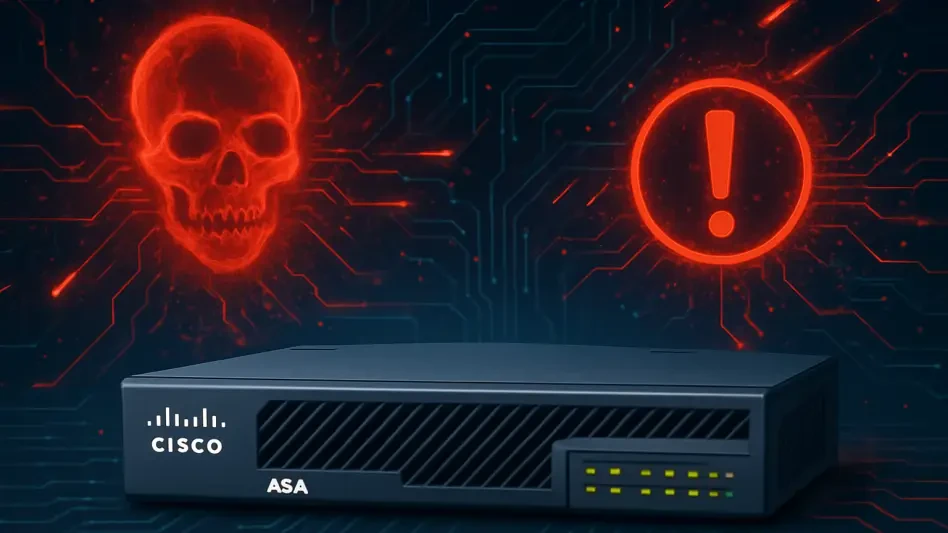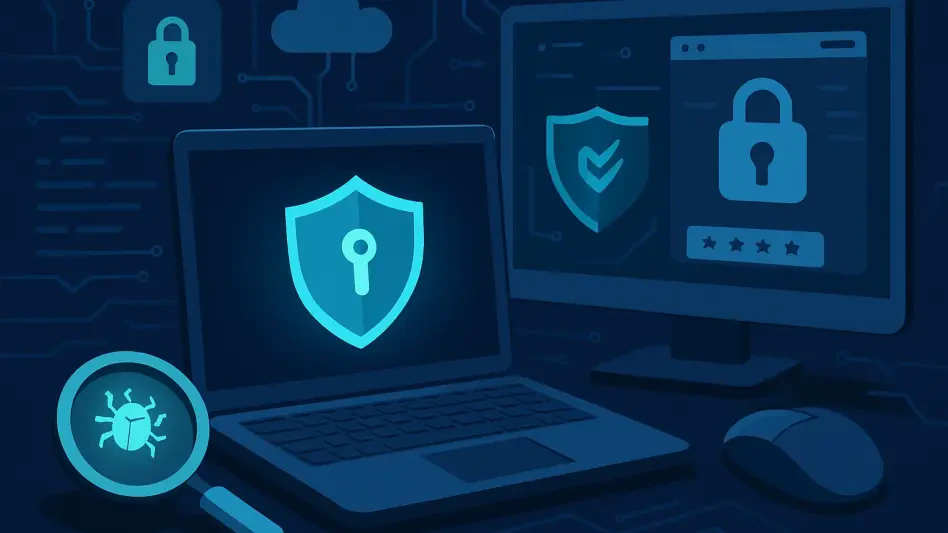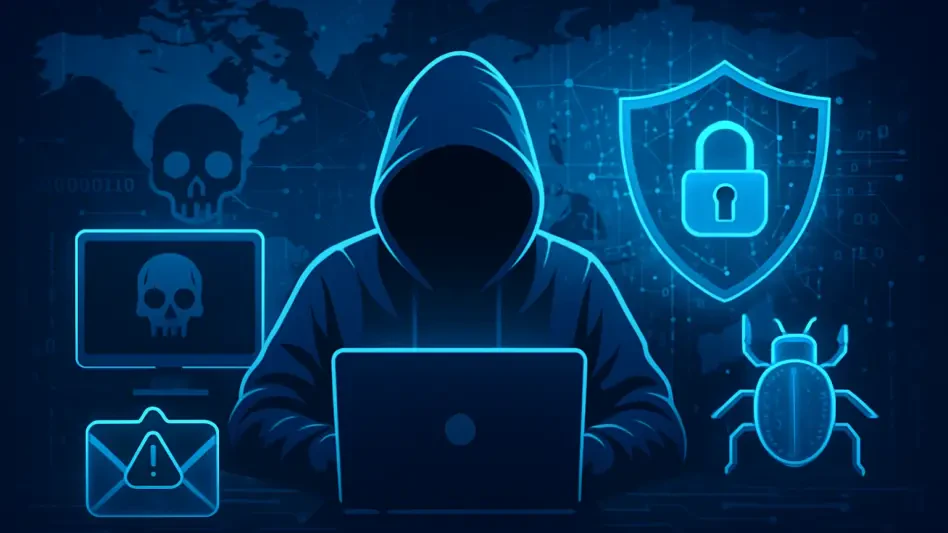The landscape of cybersecurity faces an ever-growing challenge with the emergence of sophisticated malware, such as Peaklight, which targets Windows users globally. First detected on March 6, 2025, Peaklight is designed to exfiltrate sensitive information from compromised systems, posing significant risks for both individuals and organizations. Its continuous evolution through frequent updates enables it to bypass traditional security measures effectively. Distributed through underground channels and sometimes offered as Malware-as-a-Service (MaaS), Peaklight’s extensive reach and impact cannot be underestimated.
Mechanisms of Infection and Persistence
Initial Attack Sequence and Execution Policies
Once Peaklight infiltrates a device, the infection sequence commences with a PowerShell script designed to bypass security protocols by modifying execution policies. This modification allows the malware to embed itself deeply into the system without raising alarms. By leveraging the GlobalMemoryStatusEx API call, Peaklight can detect virtual machines or sandbox environments typically used for malware analysis, enabling it to thwart efforts to study its behavior. Additionally, by dropping files with obfuscated names into user temporary directories and allocating small blocks of read-write-execute memory, it ensures seamless code execution.
The ingenuity of Peaklight lies in its deployment. The modified execution policies allow the malware to exploit systemic vulnerabilities effectively. By harnessing the GlobalMemoryStatusEx API call, it can ascertain whether it operates within an environment designed for analysis, and if detected, it immediately alters its behavior to avoid scrutiny. This stratagem makes Peaklight particularly challenging to analyze and mitigate, as it can mimic benign software to pass undetected. Furthermore, by dispersing files with obscure names, it guarantees persistence within the system while evading standard detection mechanisms.
Anti-Analysis Mechanisms and Persistence
Another layer of sophistication in Peaklight’s design is its robust anti-analysis mechanisms. Once embedded, the malware employs various techniques to prevent detection and removal. These include suspicious registry modifications and dynamic-link library (DLL) injections, which allow Peaklight to hook into system processes and remain in a dormant state, only activating when certain triggers are met. This makes it extremely challenging for conventional antivirus programs to identify and eradicate the threat. Peaklight’s persistence is also buttressed by its ability to create multiple redundant pathways within the system, ensuring that even if one pathway is identified and neutralized, others can sustain the malware’s activities.
Registry modifications are particularly insidious as they tweak system settings to ensure that the malware remains active through system reboots. DLL injections further enhance its stealth capabilities by integrating the malicious code into legitimate system processes. This dual approach significantly complicates efforts to detect it. Moreover, Peaklight’s capability to establish multiple redundant pathways means that even advanced threat detection tools might only address the symptoms rather than root out the cause, necessitating comprehensive strategies for long-term mitigation.
Detection and Identification Techniques
Hash Signatures and Suspicious Behaviors
Detecting Peaklight requires vigilance and a keen eye for its distinctive behaviors along with the use of specific hash signatures. These signatures include MD5 (95361f5f264e58d6ca4538e7b436ab67) and SHA256 (07061f3fd8c15bdd484b55baa44191aa9d045c9889234550939f46c063e6211c). Security experts recommend leveraging tools like Sysmon with custom configurations and monitoring rules to enhance detection capabilities. For instance, installing Sysmon with the PowerShell command .\Sysmon64.exe -accepteula -i sysmonconfig.xml can set up appropriate monitoring rules tailored to recognizing Peaklight’s activities.
Sysmon’s efficacy lies in its ability to monitor and log system events comprehensively. By using custom configurations, security teams can filter events specifically linked to Peaklight’s behavior, such as unusual registry modifications or unexpected DLL injections. Analysts can glean critical insights into the malware’s operations by cross-referencing these logs with known hash signatures. The combined use of tailored monitoring rules and recognizing hash signatures forms a crucial line of defense, enabling a more proactive stance in identifying and mitigating Peaklight infections before they escalate.
Custom YARA Rules and Real-Time Alerts
Using advanced threat detection platforms like Wazuh to develop custom YARA rules can significantly aid in identifying Peaklight through signature-based scanning. These rules detect common patterns employed by the malware, including AES encryption functions and obfuscated PowerShell commands. Configuring security dashboards to provide real-time alerts for any activities related to Peaklight enhances an organization’s ability to respond swiftly and effectively. By recognizing and analyzing these specific traits, security teams can pinpoint potentially malicious activities within their networks.
The implementation of YARA rules focuses on detecting the unique signatures and methodologies used by Peaklight, thereby providing a robust layer of detection. Real-time alerts are crucial for timely interventions, helping prevent the malware from establishing a foothold and spreading further within the system. This proactive approach allows organizations to not only detect but also quarantine and neutralize threats in their early stages. Ensuring security dashboards are properly configured to focus on Peaklight’s commonly used techniques can significantly reduce response times and potential damage.
Mitigation and Prevention Strategies
Comprehensive Endpoint Monitoring
Mitigating the risks posed by Peaklight requires deploying comprehensive endpoint monitoring solutions that provide visibility into all system activities. Keeping all systems updated with the latest security patches is a fundamental step in bolstering defenses against this evolving threat. Using advanced threat detection tools capable of identifying Peaklight’s specific behavioral patterns allows organizations to preemptively address vulnerabilities and enhance their cybersecurity posture. Proactive monitoring and timely updates significantly reduce the malware’s ability to exploit gaps within the system.
Endpoints form the most vulnerable points within any network, making them prime targets for malware attacks. By deploying comprehensive monitoring solutions, organizations can track all activities occurring within these endpoints. Such visibility ensures that unusual activities, including those indicative of Peaklight infections, are flagged in real-time. Moreover, maintaining updated security protocols closes potential entry points that the malware might exploit. This combined strategy of vigilance and proactive updates helps ensure long-term resilience against sophisticated threats.
Strengthening Detection Capabilities
The landscape of cybersecurity is increasingly challenged by sophisticated malware like Peaklight, which targets Windows users worldwide. First detected on March 6, 2025, Peaklight is crafted to steal sensitive information from compromised systems, posing significant threats to both individuals and organizations. Its ability to continuously evolve through frequent updates allows it to effectively bypass traditional security measures, making it particularly perilous. Distributed through underground channels and sometimes offered as Malware-as-a-Service (MaaS), Peaklight’s extensive reach and profound impact cannot be underestimated. The sophistication of this malware underscores the need for advanced security measures and constant vigilance to protect against its dynamic threat. In a world where cyber threats are constantly advancing, awareness and proactive defense are more crucial than ever.







